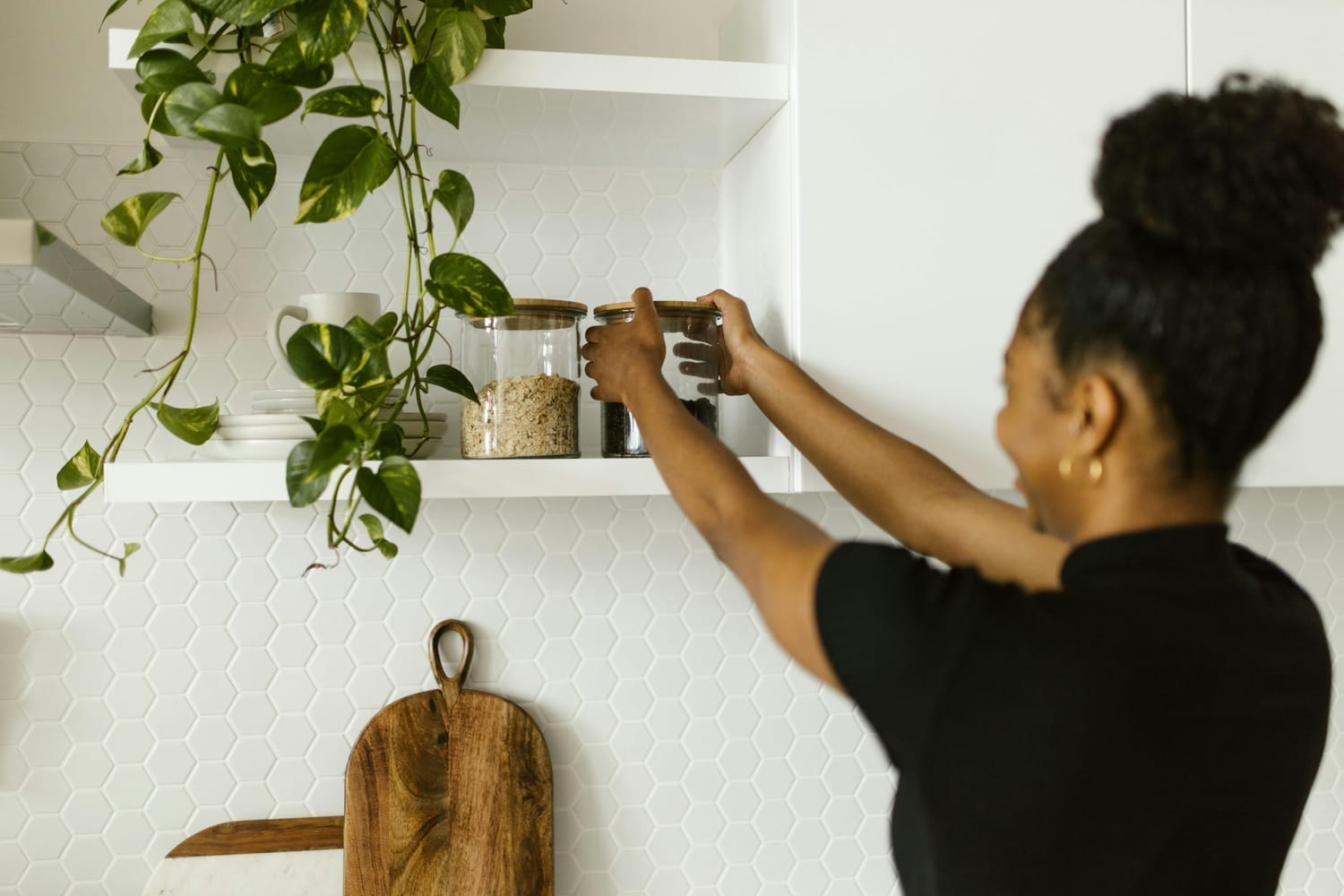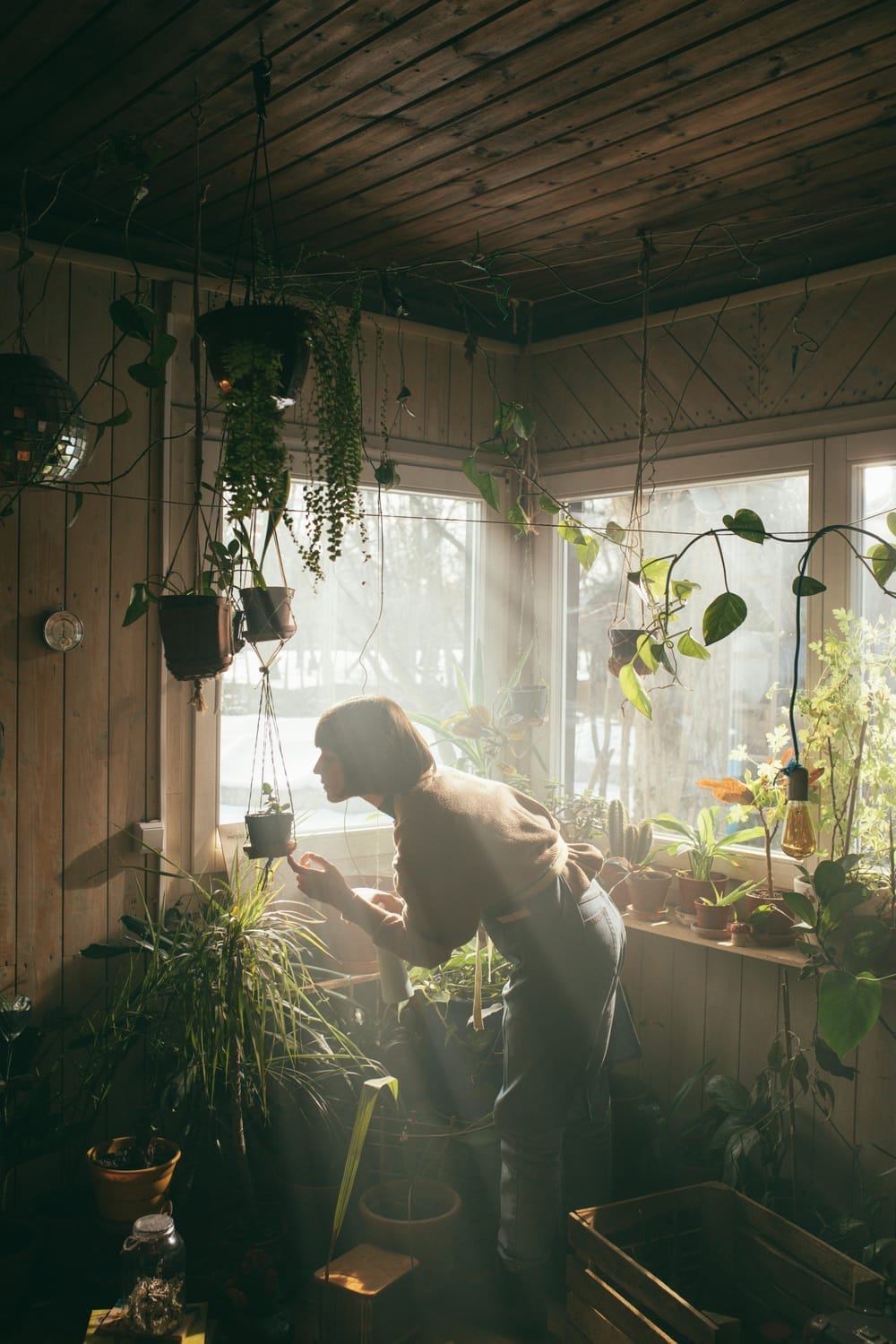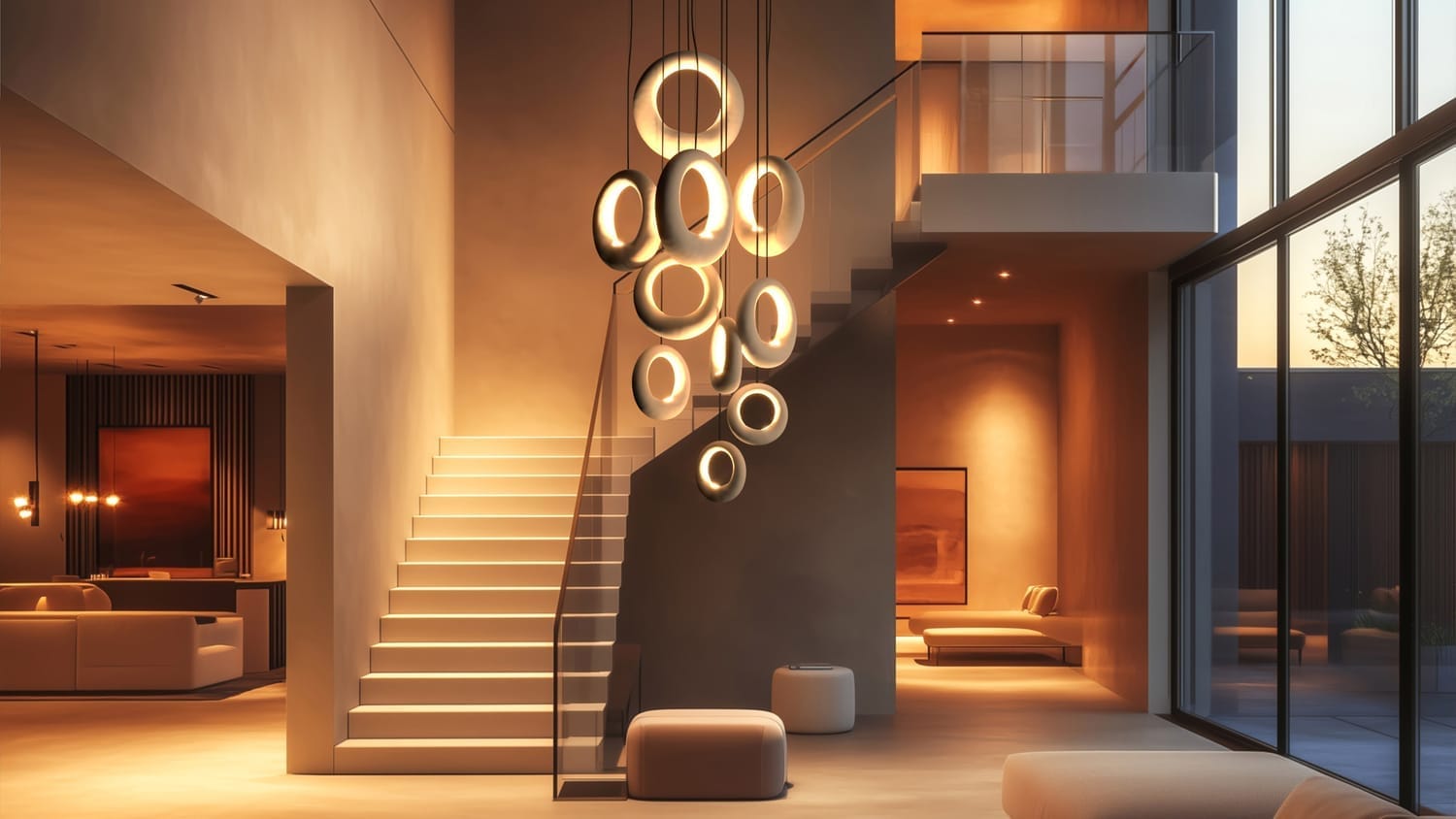

5 Simple Interior Design Tweaks for Instant Stress Relief: Backed by Science
5 Simple Interior Design Tweaks for Instant Stress Relief: Backed by Science

If you have ever felt like your home, the space where we all go to for rest, recovery, connection and community with our inner circle, feels less like a sanctuary - and you constantly feel that low hum of stress that follows you from the outside world right through your front door, I get it - and you’re definitely not alone.
Our homes should be our havens, the places where we can truly exhale and recharge.
But sometimes, without us even realising it, our surroundings can contribute to that very stress we should be leaving outside the door. We know that we are going to pick it back up again the next morning; and being refreshed, rejuvenated and equipped to handle whatever life throws at us is absolutely integral, and getting that rest happens in a space of healing.
That space of healing is our homes.
I love this fascinating saying by the Architect, Richard Neutra, in his 1954 book Survival through Design.
He said:
"A workable understanding of how our psychosomatic organism ticks, information on sensory clues which wind its gorgeous clockwork or switch it this way or that, undoubtedly will someday belong in the designer’s mental tool chest.”
And it is beginning to, but not as much as it should. I am dedicated to helping change that rhetoric.
As an interior designer deeply fascinated by the intricate connection between our brains and our environments – what we call neuropsychology in design – I have discovered some incredibly simple yet powerful ways to shift the energy in your home, instantly dialing down the stress levels. These aren't about massive renovations or expensive makeovers,( although i live for and love the idea of doing massive renovation projects) there are small, mindful tweaks you can make right now, backed by the science of how our minds perceive and respond to our surroundings.
So, if you’re craving a little more peace and a little less pressure the moment you step inside your home, you are in the right place.
Ready to feel the difference? Let’s explore!
The Instant Reset Button: The Power of a Quick Surface Clear

Think about those moments when you feel instantly overwhelmed just by looking at a cluttered space.
Maybe it’s your desk buried under a week’s worth of papers, or the kitchen counter playing host to everything but actual food prep. Our brains are visual creatures, and when they’re bombarded with too much visual noise, it triggers a stress response; and a lot of it flies under the radar unless you are aware.
The Science Bit: Our brains naturally seek order. When we are faced with visual chaos, our cognitive load increases, making us feel more stressed and less focused.
Your Quick Win: Take five minutes – set a timer if you like! – and focus on clearing one surface: your coffee table, a corner of your desk, pick one that feels most urgent to you right now. Remove anything that doesn’t need to be there. You wll be amazed at the immediate sense of spaciousness and calm this simple act can bring.
It’s like giving your eyes (and your brain) a little breathing room.
Try This Now: If you are in your home while reading this, look around. What’s one surface you can tackle right now? Go for it! I promise you will feel a little lighter.
Bringing the Outdoors In: Nature's Instant Mood Booster
Have you ever noticed how good you feel after spending some time in nature?
There’s a powerful reason for that! We have an innate connection to the natural world – it’s called biophilia – and bringing elements of nature into our homes can have a wonderfully grounding effect.
I became sold on this practice during my research project at university. I discovered this ancient Japanese practice called Shinrin - Yoku, or forest bathing, which is a practice of immersing yourself in nature, in their case, typically forests; and it involves using all our five senses to experience the forest atmosphere. I also discovered that trees release these chemicals called terpenes and phytoncides, known to regulate the nervous system and induce relaxation as well as boost immune function.
The interesting bit is this - these chemicals are released to repel disease and pests, but it is so beneficial to us humans. Another win for the argument that our biology is wired to be in perfect synchrony with our environment. And what is even cooler? Indoor plants release these Terpenes and Phytoncides too!
The Science Bit: Studies have shown that simply being around plants and natural elements can lower our levels of cortisol, the stress hormone, and even improve our mood.
Your Quick Win: Introduce a touch of green into your space. Even a small potted plant on your windowsill (or many - the more the merrier, i'd say), a vase of fresh flowers on your table, or a bowl of smooth stones or potpourri can make a difference. It’s a little reminder of the outside world, bringing a sense of freshness and tranquility indoors.
Try This Now: Do you have a plant friend nearby? Take a moment to really appreciate its presence. Notice the colour, the shape of its leaves. There's a little dose of nature’s calm, right there.
Shine a Softer Light: Creating a Calming Ambiance
Think about the difference between white, bright overhead lighting and the warm, gentle glow of a lamp.
Which one makes you feel more relaxed?
Our brains and neuroendocrine systems are incredibly sensitive to light. Harsh, bright fluorescent lighting can often feel jarring and even contribute to anxiety. On the other hand, soft, warm light tends to create a more soothing and inviting atmosphere.
The Science Bit: Our internal clock, the circadian rhythm, commonly known the sleep-wake cycle, is regulated by light. Soft, warm light in the evening signals our bodies to wind down, triggering the release of melatonin which promotes relaxation and better sleep.
Your Quick Win: Pay attention to the lighting in your main living areas, especially in the evenings. Could you swap out any harsh, cool-toned bulbs for warmer, more inviting ones?
Try This Now: What kind of light are you under right now? Could you make it a little softer, a little warmer? Even a small adjustment can make a big difference in how you feel.
Wrap Yourself in Comfort: The Power of Texture

Our sense of touch is incredibly powerful and directly linked to our feelings of comfort and security. Think about sinking into a soft armchair or wrapping yourself in a cosy blanket. Those tactile sensations have a direct line to our feelings of comfort and security.
The Science Bit: Our sense of touch is deeply connected to our nervous system. Soft, comforting textures trigger the release of oxytocin, that wonderful feel-good hormone that promotes feelings of calm and well-being and helps us relax.
Your Quick Win: Introduce some inviting textures into your living spaces. A soft throw draped over your sofa, some plush cushions on your chairs, a cosy rug under your feet – these little touches can instantly make a room feel more welcoming and calming. The simple act of running your hand over a soft surface or snuggling into a comfortable throw can instantly soothe your senses and reduce feelings of stress.
Try This Now: Reach out and touch something near you. What does it feel like? Does it feel comforting? Think about adding more of those textures you love to your home.
Your Sanctuary Within: Creating a Little Calm Corner

Even if you don’t have a spare room, carving out a dedicated space for relaxation can have a significant impact on your stress levels and be incredibly beneficial for your mental well-being.
Think of it as your personal little escape hatch within your home. This doesn't need to be an entire room – even a corner, regardless of size, can become your personal oasis.
The Science Bit: Designating a specific area for calm helps your brain associate that space with feelings of safety, peace and relaxation, helping to reduce feelings of anxiety and promoting mindfulness; making it easier to switch into a more relaxed state when you’re there.
Your Quick Win: Find a quiet corner in your home – it could be in your bedroom, your living room, or even a tucked-away spot in your hallway. Make it inviting with a comfortable cushion, a small chair, or a soft rug. Keep it free from clutter and distractions. Add a few things that bring you joy and peace, like a favorite book, a calming scent diffuser, or a piece of art that makes you smile.
Try This Now: Where in your home could you create your own little calm corner? What’s one thing you could add to make it feel more like your personal sanctuary?
These simple tweaks are just the beginning of how you can intentionally design your home to be a true source of calm and well-being.
This is about creating a space that not only looks beautiful but also feels good, supporting your mental and emotional health every single day.
Taking It To The Next Level
Feeling inspired to take these ideas further and create a home that truly nurtures your inner peace?
I’ve put together a special guide just for you:
The Ultimate Guide to Implementing These 5 Tricks for Long-Term Stress Reduction.
Inside, you will find even more in-depth tips, specific product recommendations, easy DIY ideas, and a deeper dive into the neuropsychological principles behind these strategies.
It’s like having me right there with you, guiding you every step of the way to transform your home into your ultimate sanctuary.
Join my paid membership and have access to this and much more inside the community.
Click here to unlock the full guide and create your calm!
I truly believe that everyone deserves to feel a sense of peace and joy in their own home. Which of these simple tweaks are you most excited to try? Let’s create our calm, together.
FAQs: 5 Simple Interior Design Tweaks for Instant Stress Relief: Backed by Science
Q1: Do these simple interior design tweaks really make a difference in stress levels?
Yes!
While they might seem small, each of these tweaks is based on principles of neuropsychology, which studies how our brain responds to our environment. They are designed to have an immediate positive impact on your mood and stress levels.
Q2: I live in a small apartment; can I still implement these tips?
Absolutely! These tweaks are designed to be adaptable to any size space. Focus on the impact you can make in small areas. For example, clearing a small section of a shelf can bring a sense of calm.
Q3: How quickly will I notice a difference in my stress levels?
Many people report feeling a difference almost immediately, especially with the decluttering and lighting tweaks. The more consistently you implement these tips, the more significant the long-term impact will be.
Q4: Are these tips expensive to implement?
Not at all! These are designed to be simple and budget-friendly. Many of them involve rearranging what you already have or making small, inexpensive changes.
Q5: Which of these tweaks should I try first?
We recommend starting with the one that resonates most with you or addresses the biggest source of stress in your home. For many, a quick declutter provides an instant sense of relief.
Q6: You mentioned neuropsychology – can you explain that a bit more?
Neuropsychology in interior design is about understanding how our brain and nervous system react to different elements in our environment, such as light, colour, texture, and order. We use this scientific understanding to create spaces that promote well-being.
Q7: Where can I learn more about the science behind these tips?
We delve deeper into the scientific research and principles behind these strategies in our subscriber-exclusive guide, "The Ultimate Guide to Implementing These 5 Tricks for Long-Term Stress Reduction."
Q8: What if I don't have a green thumb? Are there any low-maintenance plants you recommend?
Yes, absolutely! Some great low-maintenance options include snake plants, spider plants, ZZ plants, and succulents. They are very forgiving and still offer the stress-reducing benefits of nature. They still need love though, so dont leave them without water, light and food!
Q9: What kind of lighting is best for reducing stress in the evening?
Opt for softer, warmer light sources like lamps with amber-toned bulbs. Avoid harsh overhead fluorescent lighting, especially in the hours leading up to bedtime. Dimmers are also a great way to control the intensity of your lighting.
Q10:I have a lot of sentimental items that contribute to clutter. How can I declutter without feeling overwhelmed?
That's a common challenge! Start small and focus on one area at a time. Consider keeping only the items that truly bring you joy or serve a specific purpose. You can also take photos of sentimental items you don't need to keep physically. Our ultimate guide offers more in-depth strategies for mindful decluttering.
Q11: What if I don't have a dedicated space for a calm corner?
That's okay! Your calm corner can be a small, designated area within a larger room. Even a comfortable chair with a small side table in a quiet part of your living room or bedroom can work wonders.
Q12: What will I find in "The Ultimate Guide to Implementing These 5 Tricks for Long-Term Stress Reduction"?
Our ultimate guide provides a much deeper dive into each of these five tricks. You'll find specific product recommendations, step-by-step DIY guides, advanced techniques for maximising their impact, and strategies for integrating them throughout your entire home for lasting well-being.
Q13: Is the ultimate guide worth subscribing for?
If you're serious about creating a truly stress-reducing home environment and want detailed, actionable strategies and expert advice based on neuropsychology, then yes, we believe you'll find immense value in our ultimate guide.
Q14: Do you offer interior design services beyond these tips?
Yes, I do! I specialise in creating well-being focused interiors using principles of neuropsychology. You can learn more about my services on my services page.
Want expert help designing a home tailored to your cognitive needs? Book a 1-hour Home Diagnostic Consultation today.
Let’s create a space that enhances your focus, creativity, and mental well-being. Book your1-hour Home Diagnostic Consultationto uncover the hidden factors affecting your productivity.





